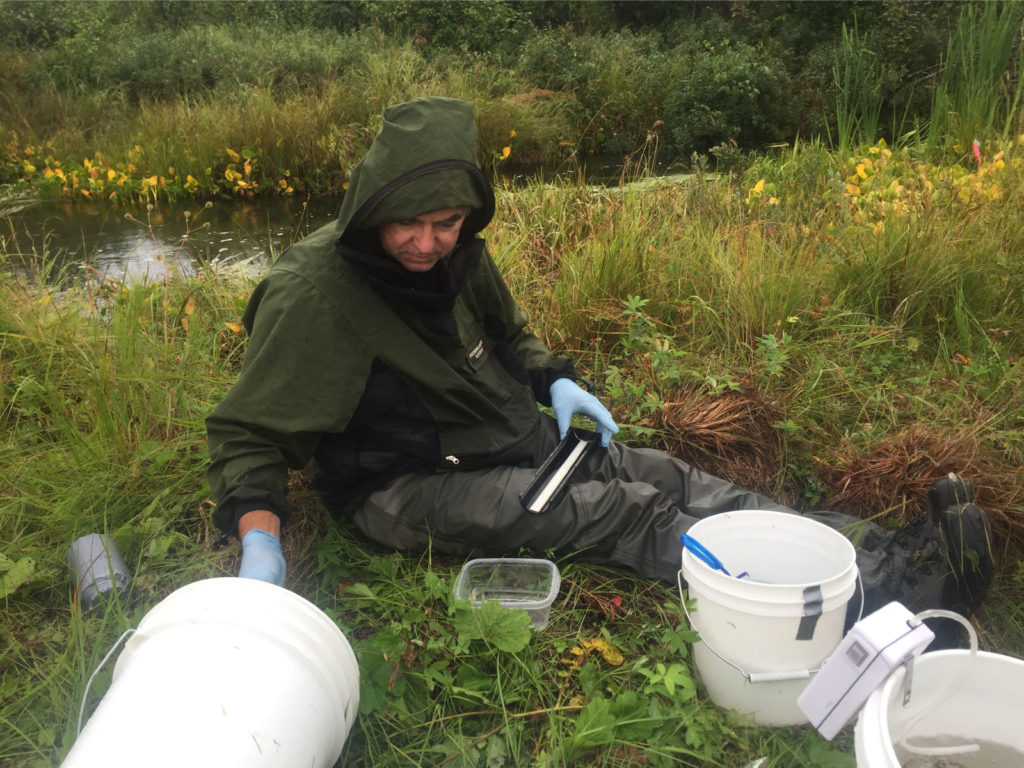Baseline monitoring and assessment is essential to understanding ecosystem response to future change and tracking impacts to freshwater habitat and aquatic life. In Alaska, baseline characterizations are increasingly important given the rate of environmental change, population growth, and resource development. We partner with agencies to monitor and assess baseline conditions of water quality, physical habitat, and biological communities across the state of Alaska. The goal of our survey designs is to provide a representative baseline of ecological conditions for streams, rivers, lakes and wetland ecosystems, providing essential data for resource managers, policy makers, and stakeholders.
Stream biological communities are important indicators used in aquatic monitoring because they offer information on ecosystem perturbations. Because different assemblages operate on different spatial scales and are sensitive to different types of impacts, we monitor multiple biological assemblages (macroinvertebrates, diatoms, and fish) in our aquatic monitoring programs to enhance our ability to detect and diagnose ecological impairment.
Stream temperature has tremendous ecological significance for salmon, which are of high economic value in Alaska. Our group specializes in stream temperature monitoring and data delivery. We collaborate with organizations across Alaska to make stream temperature data publicly available and improve data collection and management strategies and standards. As part of this work, we host the AKTEMP Water Temperature database. AKTEMP is a cloud-based database platform for storing and accessing stream and lake temperature monitoring data. We also helped lead an effort to develop the next freshwater temperature action plan for the state for the next decade (2025-2034).


